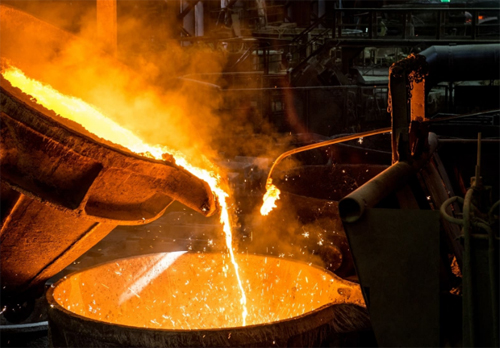
Calcium inclusions play a significant role in steelmaking, impacting the quality and performance of the final steel product. This article explores the importance of calcium inclusions, focusing on their formation, control, and influence on steel properties. Understanding the characteristics and behavior of calcium inclusions enables steel manufacturers to optimize their processes and produce high-quality steel for diverse applications.
Calcium inclusions are non-metallic particles that form during the steelmaking process. Calcium is typically added in the form of calcium alloys, such as calcium silicon (CaSi) or calcium aluminum (CaAl), to react with impurities present in the steel melt. These impurities include oxygen, sulfur, and other elements. Calcium has a strong affinity for oxygen, forming calcium oxide (CaO) inclusions, while reacting with sulfur to produce calcium sulfide (CaS) inclusions. The size, composition, and distribution of calcium inclusions depend on various factors, including the calcium content, reaction kinetics, and steel processing conditions.

Controlling calcium inclusions is crucial for achieving desired steel properties. Steel manufacturers employ several methods to manage calcium inclusions during steelmaking. One approach is to adjust the calcium addition rate and timing, ensuring optimal reaction conditions for the formation of desired calcium compounds. Additionally, refining processes, such as ladle metallurgy treatments, enable the removal of undesired inclusions through the use of slag or flux agents. By controlling the calcium addition and refining techniques, steelmakers can influence the size, composition, and morphology of calcium inclusions.
Calcium inclusions have a significant impact on steel cleanliness. The presence of calcium inclusions facilitates the removal of harmful impurities, such as oxygen and sulfur, from the steel melt. Calcium oxide and calcium sulfide have higher melting points than steel, causing them to float as slag during refining processes. This enables the separation and subsequent removal of these inclusions from the steel. By enhancing steel cleanliness, calcium inclusions contribute to the production of high-quality steel with improved mechanical properties and reduced susceptibility to defects.
The presence of calcium inclusions affects various mechanical properties of steel. Calcium oxide inclusions can act as nucleation sites for grain refinement, resulting in fine-grained steel microstructures. These refined grains contribute to improved strength, toughness, and fatigue resistance of the steel. Additionally, the modification of non-metallic inclusions by calcium enhances the steel's ductility and fracture toughness. Calcium sulfide inclusions also act as barriers, hindering crack propagation and enhancing the steel's resistance to fracture. The controlled presence of calcium inclusions influences the steel's overall mechanical behavior, making it suitable for demanding applications.
Controlling calcium inclusions in steel production presents certain challenges. One challenge is achieving uniform distribution of calcium inclusions throughout the steel matrix. Uneven distribution can lead to localized variations in steel properties. To mitigate this issue, manufacturers employ advanced techniques, such as electromagnetic stirring, to promote homogeneous distribution of inclusions during the solidification process. Another challenge is avoiding excessive calcium addition, which can lead to the formation of large, detrimental inclusions. Optimization of calcium addition rates, coupled with precise control of reaction conditions, helps mitigate this challenge.
Advancements in steelmaking technology have led to continuous improvements in controlling calcium inclusions. The development of sophisticated monitoring and characterization techniques, such as scanning electron microscopy (SEM) and energy-dispersive X-ray spectroscopy (EDS), enables precise analysis of the size, composition, and distribution of calcium inclusions. Additionally, computational modeling and simulation techniques provide valuable insights into the behavior and interactions of calcium inclusions during steel processing. These advancements contribute to better understanding and control of calcium inclusions, leading to enhanced steel quality and performance.
Calcium inclusions play a vital role in steelmaking, impacting the cleanliness, mechanical properties, and overall quality of the steel product. The formation and control of calcium inclusions are critical considerations for steel manufacturers striving to produce high-quality steel for diverse applications. By optimizing calcium addition rates, refining techniques, and distribution uniformity, manufacturers can tailor the characteristics of calcium inclusions to achieve desired steel properties. Continued advancements in monitoring, characterization, and modeling techniques offer promising prospects for further improving the control and understanding of calcium inclusions in steelmaking processes.

Write a Message